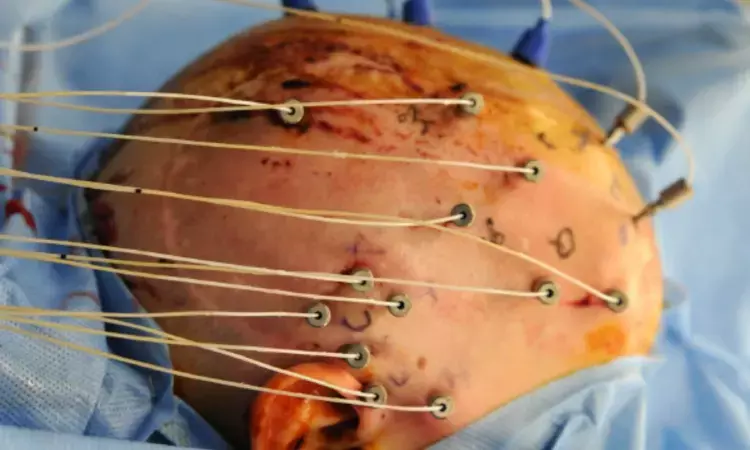- Home
- Medical news & Guidelines
- Anesthesiology
- Cardiology and CTVS
- Critical Care
- Dentistry
- Dermatology
- Diabetes and Endocrinology
- ENT
- Gastroenterology
- Medicine
- Nephrology
- Neurology
- Obstretics-Gynaecology
- Oncology
- Ophthalmology
- Orthopaedics
- Pediatrics-Neonatology
- Psychiatry
- Pulmonology
- Radiology
- Surgery
- Urology
- Laboratory Medicine
- Diet
- Nursing
- Paramedical
- Physiotherapy
- Health news
- Fact Check
- Bone Health Fact Check
- Brain Health Fact Check
- Cancer Related Fact Check
- Child Care Fact Check
- Dental and oral health fact check
- Diabetes and metabolic health fact check
- Diet and Nutrition Fact Check
- Eye and ENT Care Fact Check
- Fitness fact check
- Gut health fact check
- Heart health fact check
- Kidney health fact check
- Medical education fact check
- Men's health fact check
- Respiratory fact check
- Skin and hair care fact check
- Vaccine and Immunization fact check
- Women's health fact check
- AYUSH
- State News
- Andaman and Nicobar Islands
- Andhra Pradesh
- Arunachal Pradesh
- Assam
- Bihar
- Chandigarh
- Chattisgarh
- Dadra and Nagar Haveli
- Daman and Diu
- Delhi
- Goa
- Gujarat
- Haryana
- Himachal Pradesh
- Jammu & Kashmir
- Jharkhand
- Karnataka
- Kerala
- Ladakh
- Lakshadweep
- Madhya Pradesh
- Maharashtra
- Manipur
- Meghalaya
- Mizoram
- Nagaland
- Odisha
- Puducherry
- Punjab
- Rajasthan
- Sikkim
- Tamil Nadu
- Telangana
- Tripura
- Uttar Pradesh
- Uttrakhand
- West Bengal
- Medical Education
- Industry
5-SENSE score may help identify epilepsy patients who will not benefit from invasive EEG: JAMA

Canada: A team of researchers in a new study published in JAMA Neurology have developed and validated a tool that can be helpful for doctors in determining epilepsy patients who will not benefit from invasive stereoelectroencephalography (SEEG). This in turn will reduce the unnecessary invasive diagnostic burden on patients and also the overutilization of limited health care resources.
The researchers wrote, "high specificity in score development and validation confirms that the 5-SENSE score may predict patients where SEEG is unlikely to identify a focal seizure-onset zone."
In the case of inconclusive noninvasive presurgical epilepsy workup, SEEG has become the criterion standard. However, in up to 40% of the patients, surgery is not performed because the seizure-onset zone is less focal than expected or cannot be identified. Alexandra Astner-Rohracher, McGill University, Montreal, Quebec, Canada, and colleagues developed and validated the 5-point 5-SENSE score to predict focality of the seizure-onset zone in SEEG.
The researchers performed a monocentric cohort study for score development followed by multicenter validation with patient selection interval between February 2002 to October 2018 and May 2002 to December 2019 and were followed for a minimum period of 1 year. They analyzed patients with drug-resistant epilepsy undergoing SEEG at the Montreal Neurological Institute to identify a focal seizure-onset zone.
Selection criteria included 2 or more seizures in electroencephalography and availability of complete neuropsychological and neuroimaging data sets. Patients from 9 epilepsy centers meeting these criteria were included for validation.
Patients were grouped as a focal and nonfocal seizure-onset zone based on SEEG. Demographic, clinical, electroencephalography, neuroimaging, and neuropsychology data were analyzed. Also, the researchers created a multiple logistic regression model for developing a score to predict SEEG focality and validated it in an independent sample.
A total of 128 patients (57 women [44.5%]; median age, 31 years) were analyzed for score development and 207 patients (97 women [46.9%]; median age, 32 years) were analyzed for validation.
Following were the study's key findings:
- The score comprised the following 5 predictive variables: focal lesion on structural magnetic resonance imaging, absence of bilateral independent spikes in scalp electroencephalography, localizing neuropsychological deficit, strongly localizing semiology, and regional ictal scalp electroencephalography onset.
- The 5-SENSE score had an optimal mean probability cutoff for identifying a focal seizure-onset zone of 37.6.
- Area under the curve, specificity and sensitivity were 0.83, 76.3%, and 83.3%, respectively.
- Validation showed 76.0% specificity and 52.3% sensitivity.
The researchers concluded, "The 5-SENSE score may be useful for clinical decision-making and can be helpful in identifying patients where stereoelectroencephalography is unlikely to find a focal generator."
Dr Kamal Kant Kohli-MBBS, DTCD- a chest specialist with more than 30 years of practice and a flair for writing clinical articles, Dr Kamal Kant Kohli joined Medical Dialogues as a Chief Editor of Medical News. Besides writing articles, as an editor, he proofreads and verifies all the medical content published on Medical Dialogues including those coming from journals, studies,medical conferences,guidelines etc. Email: drkohli@medicaldialogues.in. Contact no. 011-43720751


